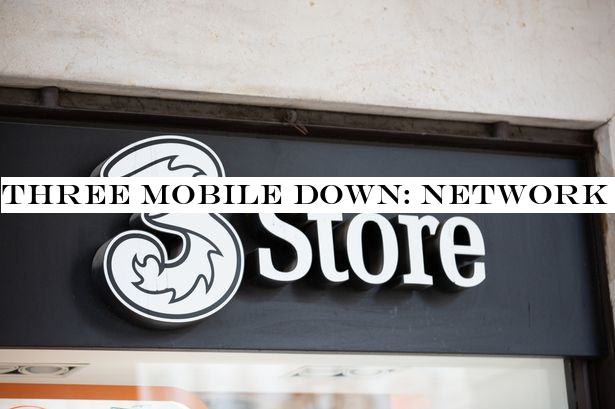Music
Trailers
DailyVideos
India
Pakistan
Afghanistan
Bangladesh
Srilanka
Nepal
Thailand
StockMarket
Business
Technology
Startup
Trending Videos
Coupons
Football
Search
Download App in Playstore
Download App
Best Collections
Technology
Welcome to this edition of The Operators, a recurring Extra Crunch column produced by insiders with executive experience at companies like AirBnB, Brex, Dropbox, Facebook, Google, Lyft, Slack, Square, Twitter, and Uber, sharing their stories and insights. Itmade for founders who are navigating domains outside their expertise, covering topics they may be learning for the first time like enterprise sales, product management, and finance/accounting.
In this episode:
- When and how should a company seek press coverage?
- The difference between marketing and communications
- Building relationships with reporters
- Being or identifying a great communications leader
Early on, most founders and investors focus on getting positive press, but if they&re unfortunate or make mistakes, mitigating bad coverage becomes a common goal. Broadly, communications consists of how and what information to share, both inside and outside of the company, touching domains like management, recruiting, marketing, and business development. Italso highly optimizable and often, mission critical — the difference between dramatic success and catastrophic failure.
We spoke with three communications experts to learn more:
- Sean Garrett was Twitterfirst VP of Communications. He previously worked for Governor Pete Wilson of California and has founded two separate communications firms, with clients including Slack, Cisco, and Disney. Hecurrently a Managing Partner at Pramana Collective.
- Faryl Ury is a former reporter with experience at NPR and the Associated Press. Her communications experience also began in government, working for US Senator Jeanne Shaheen before managing comms at Square and Uber. She was then a marketing executive at Dropbox before becoming the Director of Communications at Aurora, a leading autonomous vehicle company, with investors including Sequoia Capital, Amazon, and Hyundai.
- Adi Raval started as a journalist at ABC News and the BBC, covering 9/11, the Iraq War, and the White House. He moved into government as a diplomat for the State Department serving in Afghanistan, and later, as a spokesperson and Director of Communications at USAID. After leaving government, Adi was the top communications executive for the Bechtel Corporation, the Head of Comms and PR for TaskRabbit, and now the Head of Communications at Kodiak Robotics. Healso a term member for the Council on Foreign Relations.
Below is a synthesized summary of our conversation; check out The Operators for the full episode.
When and how should a company seek press coverage?
Investors love to see public recognition of their portfolio companies, and founders sometimes believe press coverage will solve all their problems, yielding a panacea of inbound customers, employees, and new backers. Whether ita fundraising announcement or a product launch, more exposure can only help, right? Of course, thatnot always true. Being unprepared for an influx of inbound interest can lead to bad experiences and a negative reputation.
Whatmore likely than a bad response? No response at all: reporters are constantly pitched by entrepreneurs seeking coverage who don&t have a compelling story to share, which means most of them are primed to say &no.&
Faryl told us that when she asks founders why they want to do press, they often answer, &our investors told us to,& or &I talked to other entrepreneurs and they do press.& Being prepared for the response means knowing what you want the response to be, which in turn means knowing what you have to say, and why anyone will listen and respond the right way. Thinking through this exercise involves asking questions, said Sean, specifically, &what is your positioning? What is your messaging? And for some organizations, thatthe right first step to figure out, at a high level, what are we even trying to accomplish here…?&
Having a clear purpose in mind before approaching reporters will also help you execute. For some startups, landing a story with trade press may be better than being written up by a generalized tech publication. On the other hand, if you&re spending a ton of money on Facebook and Google to advertise directly to consumers, getting coverage in the right publications may be much more efficient and impactful.
- Details
- Category: Technology
Read more: Getting press for your startup: the true role of communications
Write comment (93 Comments)
Anyone unfortunate enough to fall victim to a burglary or natural disaster understands just how frustrating it feels to deal with insurance companies. We spend thousands of dollars each year to ensure our property will be reimbursed in case of an emergency, so why does it take so long to receive reimbursement when we need it most?
If you&ve had a poor experience waiting weeks or months for your reimbursement, or if you want to rest assured that your claims will be paid out quickly in case of a future emergency, Lemonade has you covered with rates as low as $5 per month for renterinsurance and $25 per month for homeownerinsurance.
To read this article in full, please click here
- Details
- Category: Technology
Read more: You can insure your place for as low as $5 per month with Lemonade
Write comment (100 Comments)
- Details
- Category: Technology
Read more: Three Mobile down: Network crashes for frustrated users across the UK
Write comment (94 Comments)- Details
- Category: Technology
Read more: Netflix adds users ahead of Disney onslaught
Write comment (95 Comments)Banks in Latin America have long dominated the market as oligopolies, becoming highly profitable but not serving well the population.
In the region, Brazil was the first market to have the banks& oligopoly challenged by neobanks, with Nubank proving that it was possible to break them up. Providing a superior product and exceptional customer support, it was able to attract more than 15 million customers, valuing the company at an astonishing US$10 billion in its latest round.
Although Brazil has been the center of the neobanks& emergence in Latin America, attention has been shifting toward another country in the region.
The Mexican opportunity
Mexico, the second-largest economy in the region, has become a relevant market for the fintechs in the region.
The reason is not exactly the most flattering; Mexico is a large country with almost 130 million population, but a large share are still unbanked. Indeed, 63% of the adult population still doesn&t have access to financial services, according to the Global Findex database, and banks haven&t been able (or are not interested) to serve them.
Furthermore, Mexicans are very suspicious of banks because of their lack of transparency, as well as recent financial crises.
Because of this skepticism toward banks, together with a cash-based economy, 90% of all consumer transactions are still made in cash, which prompts a rather peculiar situation — twice a month (quincena) there are long lines at ATMs all across the country with people withdrawing all their wages.
On the other hand, Mexico has a digitally engaged population (Mexico is the fifth largest market for Facebook, ninth for YouTube and the third for Uber), with high smartphone penetration (85.8% according to The Competitive Intelligence Unit).
All these elements put together create a rather attractive opportunity for the emergence of neobanks.
Mexico becomes the next battleground
Mexico had a few neobank pioneers in the past couple of years; Bankaool launched its services in 2015, but was too early in the market; later on came Broxel and Albo in 2016 followed by Flink in 2018.
However, the market started to garner more attention in April 2018 when the Iranian Matin Tamizi raised US$2 million from Andreessen Horowitz (a16z) and Kaszek Ventures to create a neobank in Mexico (Cuenca). It is interesting to note that Matin, at that time, had never been to Mexico and only had a slide deck to demonstrate the opportunity.
Neobanks aren&t the only ones trying to get a share of the Mexican wallets.
This event, together with the success of neobanks in Brazil, sparked attention for the potential of the market.
A couple of months after, Albo announced a Series A, raising US$7.4 million. It is currently the leading player in the market, with 150,000 customers and the third debit card issuer in Mexico.
Shortly thereafter, Fondeadora raised a US$1.5 million seed round to enter the neobank market, pivoting from a crowdfunding platform.
Late in September, a new entrant closed a relevant round; Klar raised US$7.5 million in equity and US$50 million in debt financing with the goal to become the &Chime of Mexico.&
Vexi is another player in the market, though it is focused on providing credit cards to people at the base of the pyramid. It has issued, so far, more than 20,000 credit cards and, recently, raised US$2 million in equity and US$1 million in debt financing.
Regional and international players are also becoming interested in the opportunity. The Brazilian giant Nubank announced this year officially that it would be expanding there. From overseas, the leading Spanish neobank, Bnext, announced it would be entering the Mexican market, fueled by a fresh new round of €22.5 million. Different from other neobanks, Bnext partners with fintechs and financial institutions to provide services to its customers via a marketplace.
Nonetheless, there are rumors that other heavyweights, such as the Europeans Revolut and N26, are planning to enter the market, as well as the Argentinian Ualá.
Neobanks aren&t the only ones trying to get a share of the Mexican wallets. Many tech companies such as Cabify, Weex and Rappi are launching digital wallets and issuing debit cards, leveraging their large user base.
To add a final spice to the market, traditional banks are making a significant effort to improve their digital offers — some even going as far as launching digital branchless initiatives. The Spanish Banco Sabadell entered the Mexican market with a full digital strategy, while Banregio (a local medium-sized bank) launched Hey Banco, a new digital account.
On the sidelines, there also are a few neobanks focusing on a different segment. Oyster and Evva are targeting the unattended market of freelancers, startups and SMEs, long neglected by the incumbents.
The stage is set for an upcoming battle
Although the market is still in its early stage with just a handful of neobanks with running services, the stage is set for an amusing upcoming battle. Most players will be launching in the next couple of months, which will trigger a race for acquiring customers and raising more money.
This competition will definitely change the landscape of the financial industry in Mexico, bringing better and more affordable services to its population.
It will be indubitably interesting to watch how the market will unfold in the following years, and the prize for the winners can be quite attractive, as Nubank proved in Brazil.
- Details
- Category: Technology
Read more: The battle to become the Mexican Nubank just started
Write comment (97 Comments)
If you installed this monthfirst Win10 version 1903 cumulative update, KB 4517389, you may be in for a couple of surprises.
Mark Busby on AskWoody reported a strange bug shortly after the patch was released:
After installing KB4517389 on these Windows systems, when opening 16-bit applications an error message is displayed &unexpected error; quitting.& … After removing the update the application works fine once more.
To read this article in full, please click here
- Details
- Category: Technology
Page 603 of 5614

 16
16





